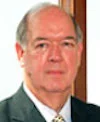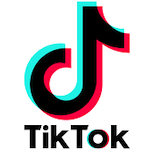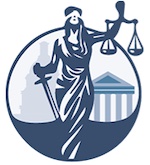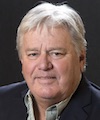 |
| Rene Henry |
During the six decades of my professional career I was fortunate to work with and learn from some of the very best graphic artists and designers. Today, when I read a magazine, newspaper and or see graphics on television or in various publications I can't help but question if the designers know their intended audience.
I wonder if creative artists today consider the size and font of the type, various color combinations, the paper being used, and the cost of their finished product.
If the audience is young with 20/20 vision, specifying small type might be acceptable. However, the intended message may not be readable by many seniors whose vision gets poorer every year. Most book publishers use serif type such as Times Roman because it is the easy to read. When italics are used the reading for many becomes more difficult, especially if it is in a color.
The designer of the instrument panel for Tesla made a costly mistake for the auto manufacturer. Tesla is recalling nearly 2.2 million vehicles, almost all that it sold in the US, because the font size on the warning lights is so small that it is dangerous. The National Highway Traffic Safety Administration said the type size could reduce the driver’s detection of it when lit.
The size of type with cooking instructions on packaged food often is so small it is nearly impossible to read. I believe lawyers specify the small type on many warranties and legal papers to make it difficult to read without a magnifying glass.
Menus are great for artists’ portfolios. The Barcelona restaurant Els Guatre Gats (Four Cats) was a popular meeting place for famous artists during the modernist period and Picasso designed its menu cover when the young artist traded his work for food. The cover is one thing but most important is for the menu to be read by the customer and often in poor light.
Color combinations are important. Black on white is dominant because it is the easiest to read. Traffic and highway signs have black type on a yellow background for readability. White lettering on a yellow background can be difficult. I had trouble following both the score and time of a basketball game last week that used this combination. Black on a dark red background also is difficult to read. The red and green color combination is considered challenging to read and especially for individuals with color vision deficiencies such as colorblindness. Design professions say that the combination of red and blue can be hard and tiring to look at or read when lines or text are different colors.
A budget may not accommodate four-color printing and often two colors can be just as effective. In 1976 I published a book on ice hockey with just red and blue ink explaining the game when the National Hockey League Kings had a new franchise in Los Angeles. I used the two color process a year later for a “how to” basketball book promotion with the Los Angeles Lakers using the team’s yellow and purple colors. It also was one of the first to portray some players as African American.
Paper is another very important consideration in design. In 1992 when I was executive director of university relations at Texas A&M University a student environmental group asked me why we aren’t using 100% recycled paper. After talking with our head of purchasing we specified 100% recycled and it saved money. Several years later when I was director of communications and government relations for the mid-Atlantic States Region of the U.S. Environmental Protection Agency I repeated this action and we required everything published to be not only 100% recycled paper but 100% with post-consumer fiber and that all printing inks be plant-based rather than petroleum-based. When my regional administrator later was named EPA administrator he established this as an agency-wide policy. However, this policy was not enforced by the George W. Bush Administration. The last I heard the region was still following the policy and saving money.
Cost is another factor. When an organization is asking for money it should never do so with expensive four-color, die-cut, blind embossed publications. When a good friend was a senior editor at a major publishing company, she was so irritated when her college sent her several such publications asking for money that she bundled them and mailed them with a letter to the president. She did not include a check.
When I was at Texas A&M we launched a $500 million capital campaign (the largest at the time undertaken by a public university) and a $72 million campaign for the Bush Presidential Library. At the same time we had a major campaign underway to rescind the Texas Legislature’s mandated 10% cut in higher education. Along with the 100% recycled paper we had a new policy that eliminated four-color printing. We created a new two-color letterhead. No long were expensively designed publications produced. Economy was the priority.
A mailing was planned for the Bush Library and designed to be as personal as possible, hand addressed and stamped. We checked the weight and it was over one ounce requiring additional postage. With some 40,000 planned for mailing I had the designer specify a different paper stock. With the new “mockup” with announcement, envelope and a reply card with envelope, we also addressed and stamped it just to make sure it came in under one ounce.
During the time I was designate assistant administrator at the U.S. Agency for International Development I chaired a committee that monthly reviewed and approved all publications. Prior to one meeting I saw a line item of $10,000 for “How to Use A Condom.” I knew what the agency’s inspector general, columnist Jack Anderson and the media would do with this based on its title. When I was told only 100 copies were needed I suggested buying inexpensive three-ring binders and printing the pages on an in-house copy machine. The total cost was less than $300. I was told the publication was necessary for distribution in Africa because natives were using the condoms as spear covers.
***
Rene A. Henry spent more than six decades of his career in public relations and sports marketing. He is the author of 10 books and writes on a variety of subjects.


 PR and marketing departments are in the hot seat, as forecasts show that growth in advertising spend stalled in 2023 in the wake of cost-of-living increases and continued economic uncertainty.
PR and marketing departments are in the hot seat, as forecasts show that growth in advertising spend stalled in 2023 in the wake of cost-of-living increases and continued economic uncertainty. WPP has forged what it calls a “first-of-a-kind global agency partnership” with China’s TikTok, a short-form mobile video platform.
WPP has forged what it calls a “first-of-a-kind global agency partnership” with China’s TikTok, a short-form mobile video platform. Widespread disinformation may derail Biden/Harris agenda, according to a coalition of advocacy groups, who see the need for government-wide strategy to repair broken information ecosystem. (1 reader comment)
Widespread disinformation may derail Biden/Harris agenda, according to a coalition of advocacy groups, who see the need for government-wide strategy to repair broken information ecosystem. (1 reader comment) There's a media appetite for positive stories right now, anything to counterbalance the steady stream of bad news from the deadly spread of COVID-19. (1 reader comment)
There's a media appetite for positive stories right now, anything to counterbalance the steady stream of bad news from the deadly spread of COVID-19. (1 reader comment) Content marketing programs should be guided by a holistic strategy to reinforce the company’s positioning and establish awareness in the marketplace. (1 reader comment)
Content marketing programs should be guided by a holistic strategy to reinforce the company’s positioning and establish awareness in the marketplace. (1 reader comment)


 Have a comment? Send it to
Have a comment? Send it to 
No comments have been submitted for this story yet.